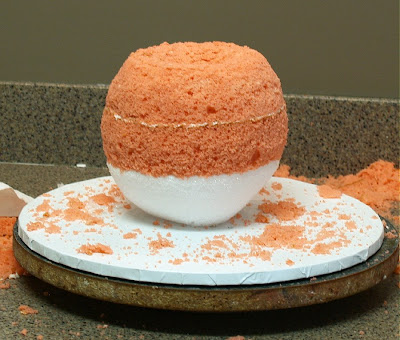Hi again sugar friend –
Ever have this happen?
You’re baking a cake, and have all the stuff in the mixer ready to go when you realize that you forgot to get one of the ingredients at the store.
It’s late and you’re tired and your grocery isn’t even open right now!
You dig around in your pantry, and way in the back you find and older container of the missing ingredient, yay!…. but it doesn’t have an expiration date on it.
ARGH! What to do?
Use it and take your chances? Or trudge to the 24 hour Wal Mart to get more?
Yeah, me too. Been there. More than once. 🙂
So I’ve put together a list of common baking ingredients, how often they should be replaced, storage suggestions, and what can be stored in the freezer.
- Since expired milk can be a safety hazard, you should always follow the expiration date for this ingredient. When kept in the fridge, milk is good for about 5 days after the sell-by date. The main body of the refrigerator stays colder than the doors so be sure to keep your milk in the main body. In the freezer, milk will stay fresh for three months.
- Butter should be kept in the refrigerator or freezer to prevent melting. Butter is good for one month after the sell-by date when kept in the fridge. In the freezer, butter will last between six and nine months.
- Buttermilk can be kept in the refrigerator for about two weeks. In the freezer, it will last up to three months. It’s important to remember that buttermilk is like regular milk in the sense that it does not matter whether or not it has been opened – it will go bad in the same amount of time. If the buttermilk smells bad or looks lumpy, it should be thrown away.
- Shortening has a relatively long shelf life when kept in a cool, dark pantry. If sealed, shortening is good for two years. Once opened, it can be stored for a year as long as you keep the lid tightly closed.Baking powder and baking soda will need to be swapped out about every six months. However, you can test these ingredients before throwing them away. To test baking soda, put a few teaspoons of white vinegar into a small bowl and add a teaspoon of baking soda. If the mixture bubbles and foams, the baking soda is still good.
- Baking powder can be tested by placing a few teaspoons of warm water in a small bowl and adding a teaspoon of baking powder. If the baking powder has not expired, it will form tiny bubbles and make the water cloudy.
- All-purpose flour stays fresh for about a year. It can be kept in the pantry, refrigerator, or freezer depending on how long you are trying to store it. Flour is best kept in its original container inside of an airtight bag to ensure it does not pick up the odor from any other ingredients stored nearby. If at any time the flour acquires a smell, it should be thrown away to ensure it does not change the taste of your cake. Expired flour can make your cake taste a little bitter.
- For safety purposes, boxed cake mix should be thrown away after the expiration date. Although it is unusual, there have been cases of cake mix developing a yeast that results in the growth of toxic spores or mold.
- An unopened bottle of vegetable oil will stay fresh for about two years. After it has been opened, you can store oil for 18 to 24 months. Oil is negatively affected by air, heat, and light. To ensure your oil lasts a long time, be sure to keep the bottle tightly sealed in a cool, dark area like the pantry.
- In terms of safety, spices do not expire. However, they really should be replaced after two or three years. Spices any older than this will start to lose their flavor and aroma causing your cake to taste funny. If at any time you notice a spice is losing its vibrancy or changing color, it should be thrown away. Make sure you keep your spices tightly sealed in a cool area to prevent this from happening.
- Flavoring extracts are very similar to spices. They do not spoil, but they can lose flavor and aroma after six months to a year. If you notice an extract has begun to lose its smell, it is best to throw it away to ensure it does not affect the outcome of your baking. The only exception is pure vanilla extract which actually improves with age and can be stored indefinitely.
So that covers the basic shelf life for common baking ingredients.
However, you should always contact your health department for food safety regulations.
If any ingredient looks or smells funny, even before the expiration date, it’s best to throw it away. It’s always better to be safe than sorry!
Now we can all go take stock of our pantry and fridge, purge out the old stuff and replace with new. Time to go shopping!
I hope you have a wonderfully cakey rest of the week 🙂
Sharon
————————————————–
PS. Here’s a peak of some of the new tutorials in my online school:


















































 First layer of cake in place.
First layer of cake in place.















